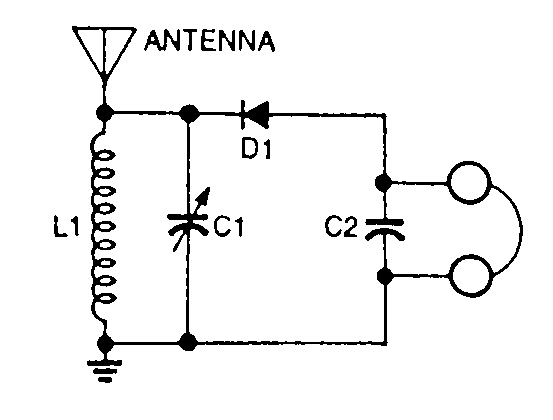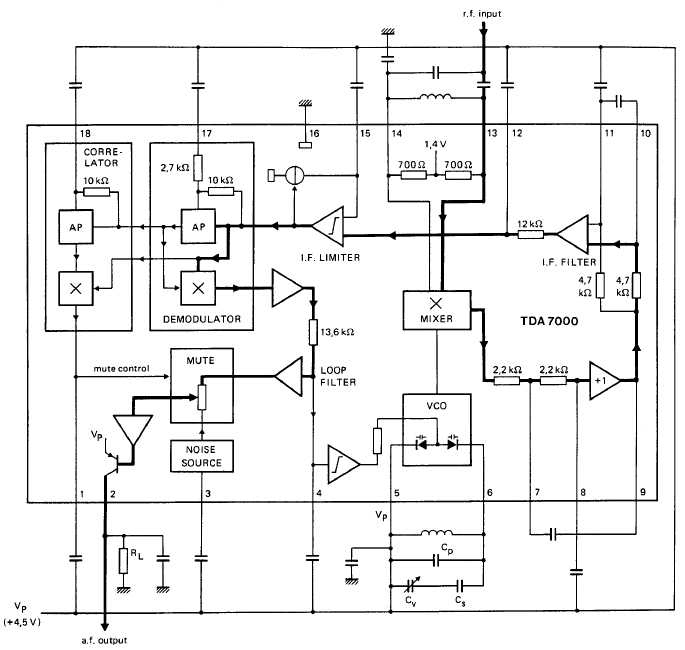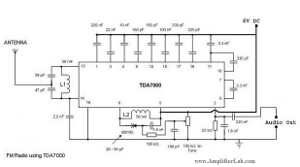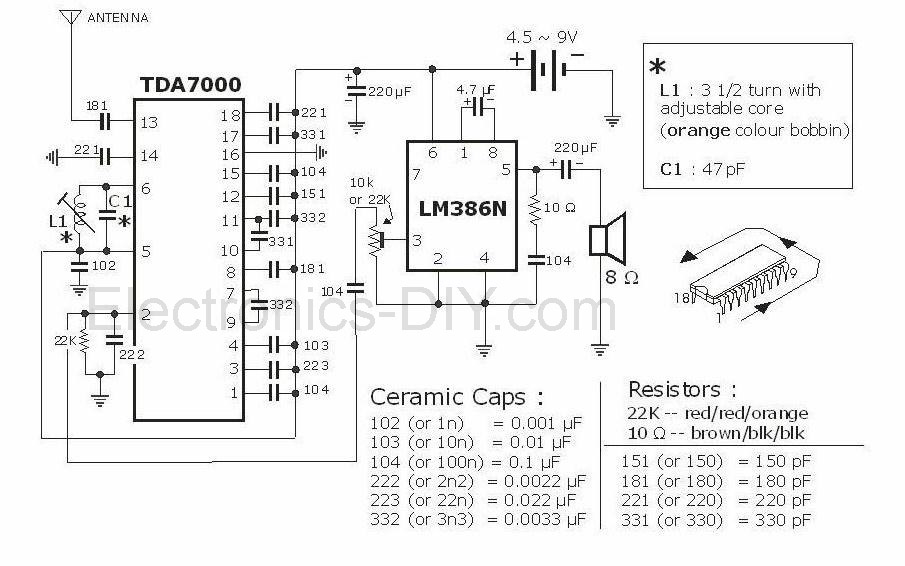
Tunable IF with TDA7000
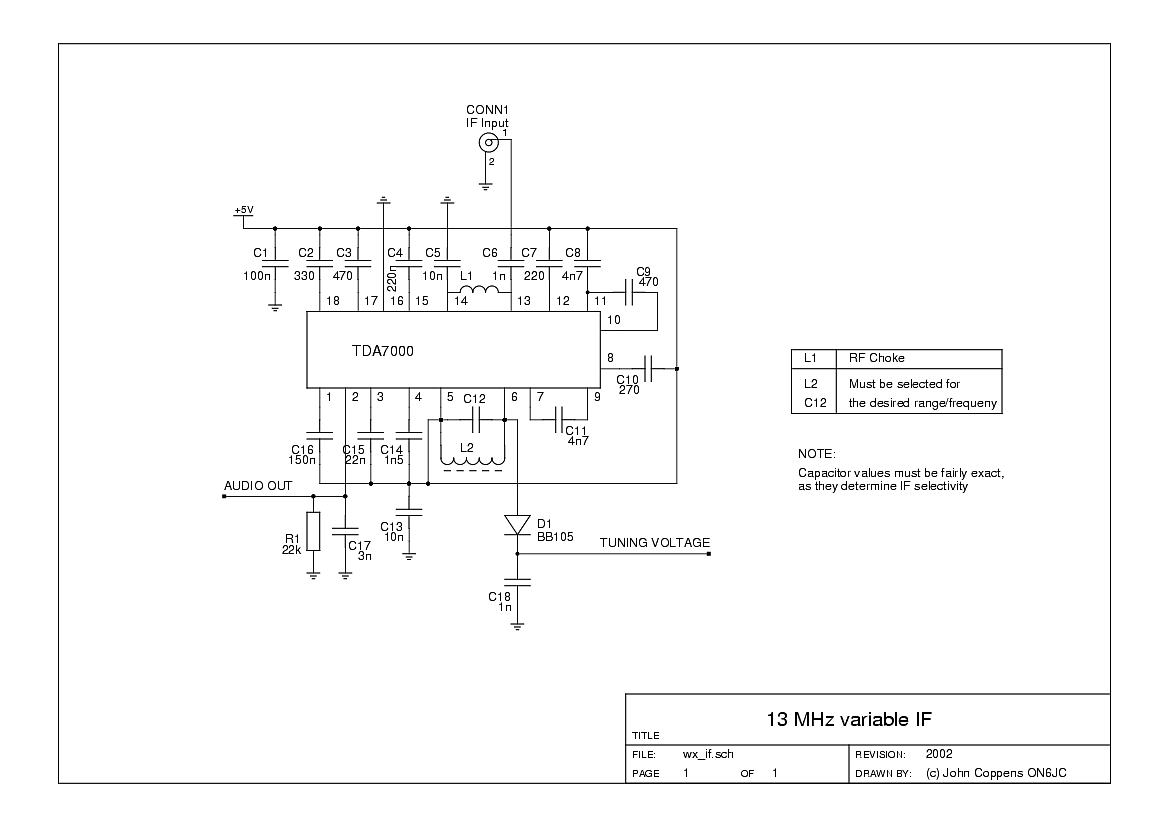
This circuit has suffered a lot of modifications over its long life. Even the lettering on the integrated circuit was partially erased over the years. The main motive of the mods was not that the circuit didn’t work right, but were several tries to add some kind of frequency indicator to the receiver. The left RCA plug and associated components are witnesses to the last version, adding a FET buffer amplifier and taking signal from the oscillator coil. None of the indicator systems was satisfactory, and the actual stability of the receiver oscillator was so good that it wasn’t really necessary either. A simple system with a preset resistor for each of the desired satellites was more than enough.
This circuit represents a modified receiver design that has undergone various iterations to enhance its functionality, particularly by integrating a frequency indicator system. The original circuit, while operational, prompted a series of modifications aimed at improving user feedback regarding frequency reception. The choice to utilize a FET (Field-Effect Transistor) buffer amplifier indicates a focus on maintaining signal integrity while interfacing with the oscillator coil.
The FET buffer amplifier serves to isolate the oscillator from the load, ensuring that the signal remains stable and free from distortion. This is particularly important in RF (radio frequency) applications where signal fidelity is crucial. The signal taken from the oscillator coil is indicative of the frequency being received, which can be crucial for tuning the receiver to specific satellites or frequencies.
The left RCA plug mentioned in the description likely serves as an output for the modified frequency indicator, allowing for external monitoring or interfacing with other devices. The modifications, while numerous, reflect an iterative design process where each version aimed to improve the circuit's performance. However, the final conclusion drawn from the modifications indicates that the inherent stability of the oscillator was sufficient for operation without the need for complex indicator systems.
The mention of a simple system with preset resistors for each desired satellite suggests a pragmatic approach to tuning, where each preset corresponds to a specific frequency. This method simplifies the user experience by allowing quick access to frequently used frequencies without the need for extensive adjustments.
Overall, the circuit exemplifies the balance between complexity and functionality in electronic design, demonstrating how iterative modifications can lead to a more user-friendly and effective device while maintaining the core operational integrity of the original design.This circuit has `suffered` a lot of modifications over its long life... Even the lettering on the integrated circuit was partially erased of the years. The main motive of the mods was not that the circuit didn`t work right, but were several tries to add some kind of frequency indicator to the receiver. The left RCA plug and associated components are witnesses to the last version, adding a FET buffer amplifiera and taking signal from the oscillator coil.
None of the indicator systems was satisfactory, and the actual stability of the receiver oscillator was so good that it wasn`t really necessary either. A simple system with a preset resistor for each of the the desired satellites was more than enough 🔗 External reference
This circuit represents a modified receiver design that has undergone various iterations to enhance its functionality, particularly by integrating a frequency indicator system. The original circuit, while operational, prompted a series of modifications aimed at improving user feedback regarding frequency reception. The choice to utilize a FET (Field-Effect Transistor) buffer amplifier indicates a focus on maintaining signal integrity while interfacing with the oscillator coil.
The FET buffer amplifier serves to isolate the oscillator from the load, ensuring that the signal remains stable and free from distortion. This is particularly important in RF (radio frequency) applications where signal fidelity is crucial. The signal taken from the oscillator coil is indicative of the frequency being received, which can be crucial for tuning the receiver to specific satellites or frequencies.
The left RCA plug mentioned in the description likely serves as an output for the modified frequency indicator, allowing for external monitoring or interfacing with other devices. The modifications, while numerous, reflect an iterative design process where each version aimed to improve the circuit's performance. However, the final conclusion drawn from the modifications indicates that the inherent stability of the oscillator was sufficient for operation without the need for complex indicator systems.
The mention of a simple system with preset resistors for each desired satellite suggests a pragmatic approach to tuning, where each preset corresponds to a specific frequency. This method simplifies the user experience by allowing quick access to frequently used frequencies without the need for extensive adjustments.
Overall, the circuit exemplifies the balance between complexity and functionality in electronic design, demonstrating how iterative modifications can lead to a more user-friendly and effective device while maintaining the core operational integrity of the original design.This circuit has `suffered` a lot of modifications over its long life... Even the lettering on the integrated circuit was partially erased of the years. The main motive of the mods was not that the circuit didn`t work right, but were several tries to add some kind of frequency indicator to the receiver. The left RCA plug and associated components are witnesses to the last version, adding a FET buffer amplifiera and taking signal from the oscillator coil.
None of the indicator systems was satisfactory, and the actual stability of the receiver oscillator was so good that it wasn`t really necessary either. A simple system with a preset resistor for each of the the desired satellites was more than enough 🔗 External reference
